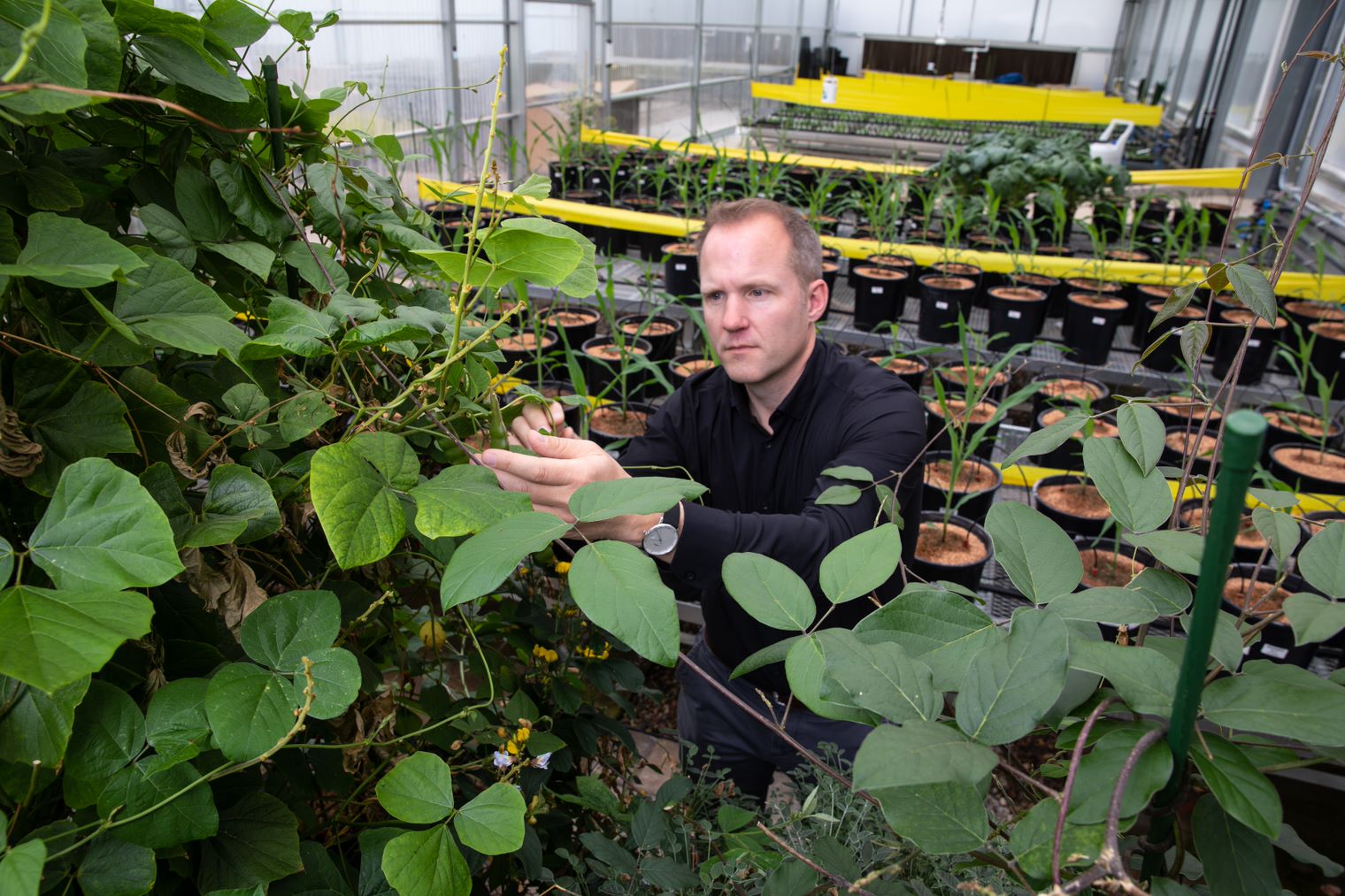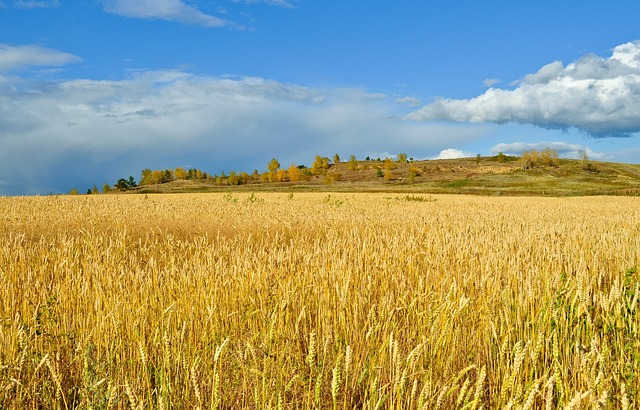What is the carbon economy and is it really viable for agriculture? A discussion with Joy Agnew.
Editor’s note: This interview has been edited for length and clarity. This interview also appeared first on our sister publication the Alberta Seed Guide, but shows an interesting perspective on the growing topic of carbon credits.
Joy Agnew is the vice president of applied research at Olds College. She has been at the school for the past two and half years and in that time she has worked to help build the Smart Farm into a hub for knowledge transfer and information for Alberta farmers. Before Olds College she worked at the Prairie Machinery Institute and the University of Saskatchewan where she received her bachelor of science and PhD degrees. Her work currently focuses on agriculture technology and agriculture technology integration.

Alberta Seed Guide (ASG): What is the carbon economy?
Joy Agnew (JA): Good question. I don’t know if I have a definition for that. But it’s a movement towards, or I guess the understanding that adopting practices or changing our practices or adopting technologies is important to reduce the overall carbon footprint of our lives. It requires some sort of incentivization. And so the establishment of carbon taxes and carbon offsets or carbon credits, I think is sort of that core definition of the carbon economy.
Now, the question is whether those taxes and offsets and credits are really the most effective mechanism for all sectors. And that’s sort of the argument I was making during a recent presentation I gave at Ag Smart, was that those mechanisms might work for certain sectors, like the energy or the mining sector, but I don’t know if they are the right solution for ag, and I unfortunately, don’t have a good solution.
But I’m very adamant about the fact that carbon credits and carbon offsets, the way they’re currently designed, in terms of the quantification and verification protocols that are required to establish them, are going to be extremely, extremely challenging for ag. So there needs to be some some thought put into that.
ASG: Why do carbon credits and carbon offsets not work?
JA: Honestly, ag has a huge role to play in reducing the overall carbon footprint, our total carbon emissions, because of the potential for carbon sequestration in the soil, or taking carbon out of the atmosphere and locking it back into the soil. There’s huge potential there. So there needs to be a way to understand that and measure that, quantify it and incentivize practices that help boost that soil carbon sequestration potential.
But the current protocols, like in order to actually qualify for a carbon credit, the practice has to be incremental, or it has to be over and above what’s currently being adopted, it has to be permanent. And then the amount of carbon, either reduced or sequestered has to be verified. And the current process for that verification piece requires extremely scientifically robust data on exactly how much carbon is removed or sequestered, based on that practice.
But with ag and these practices in ag being so varied, and spatially and temporally variable, the process to get robust data when it’s that variable will require 100s, if not 1,000s of different studies. There aren’t enough researchers or research dollars on the planet, in my opinion, to actually scientifically robustly quantify carbon reduction for every single practice, or technology that could be deployed in agriculture.
ASG: The government has announced a lot of different programs to incentivize different environmental practices lately. When you look at some of these announcements, do you feel there is an idea of a better way forward for ag?
JA: Honestly, my answer to his question would have been different a week ago. But literally less than a week ago, there was the announcement from Minister Bibeau that they were, I can’t remember how many dollars, it was like $200 million, was being allocated to support farmers and ranchers in working with their advisors and agronomist to adopt practices that reduce or improve nitrogen management, potentially incorporate cover cropping and continue to reduce the use of tillage.
So while it’s good to be incentivizing, or providing financial support for farmers to do this, and it’s not tied with an actual credit… it’s just sort of a general understanding or general knowledge that any one of those practices in those three buckets is going to help reduce the overall carbon footprint of ag and our overall society, so we’re going to support that, which is good.
ASG: Why is this something that farmers need to be aware of or should be aware of?
JA: There’s huge potential for ag to help Canada meet its overall emissions targets, because of that massive potential for carbon sequestration in our soils. So there’s potentially a revenue generation option there if we can figure out that way to quantify carbon sequestration and quantify how we can monetize that, there’s potential revenue for Canadian ag.
I crunched the numbers at a really high level … based on some modeling and projections, the ag industry has the potential to sequester or avoid up to 88 million tons of CO2 per year, just by adopting alternative practices related to nitrogen management and soil tillage and other established practices. Like 88 million tons of carbon dioxide sequestered or avoided over and above our current state, if we were able to monetize that and figure out a way to do carbon offsets or credits in a way that works for ag at say $50 per ton of CO2, that’s almost $4.4 billion per year in theoretical revenue to the ag industry. If we can figure out a way to make offsets work, there is a significant revenue opportunity there.
But there’s also the added benefit, or bonus of most of these practices, if not all of these practices, that reduce emissions or boost sequestration, also result in increased soil organic carbon, which would theoretically increase productivity and long term soil health. Or they’re going to reduce input costs, because you’re going to be using fertilizer more efficiently … So there’s additional input savings there. There’s long term environmental benefits, which then translate into productivity.
ASG: Do you feel this is feasible for farmers to be able to do?
JA: Maybe the practices yes, I think are feasible. It takes time, I guess for the understanding of the return on investment, like assuming offsets are off the table, because we just can’t figure them out, but that the long term environmental and soil health benefits are there.
If you look at, for example, conservation tillage, or zero tillage, the adoption rates, even without any kind of incentives, without any kind of offset, the adoption rates increased over time. And that was not an insignificant change that a lot of producers made when they went to a conservation tillage system, because there’s capital investment requirements in terms of new equipment. There’s a lot of unknowns around agronomic information like seeding rates and weed management and trash management, and there’s a lot of unknown, a lot of uncertainty, a lot of risk, and a lot of upfront costs. And yet, that practice was still adopted over time, and is now the majority, I think of how farmers manage in Western Canada.
So that example, illustrates the fact that if there is a long term environmental or soil health gain to be made, then it is feasible. The challenges though, that we’re now working on a compressed timeframe. If you look at adoption rates of conservation tillage, it took 30 plus years to reach 60% adoption of conservation tillage. With the government’s new emission reduction targets, we’re basically having to cut our emissions in half, as a country not just the ag emissions, we have to cut our emissions in half within 10 years. We can’t wait or we can’t rely on that natural progression or natural adoption of new technologies.
ASG: Is there anything else you’d like to say?
JA: Everybody’s talking about the carbon economy. Like all the big companies are trying to figure out how they can help us move the needle, so to speak. And it’s going to be an exciting year or two in this space, because there’s incentives in terms of the government mandating or putting into law these emission reduction targets, which is that catalyst that’s required to really light a fire, to help figure some of these things out.
Because like I said, I don’t think the current system is viable for ag but somebody or some group, or as a collective, we need to figure that out quickly, because these emission reduction targets are real and they are accelerated, the timeline is quite ambitious.













